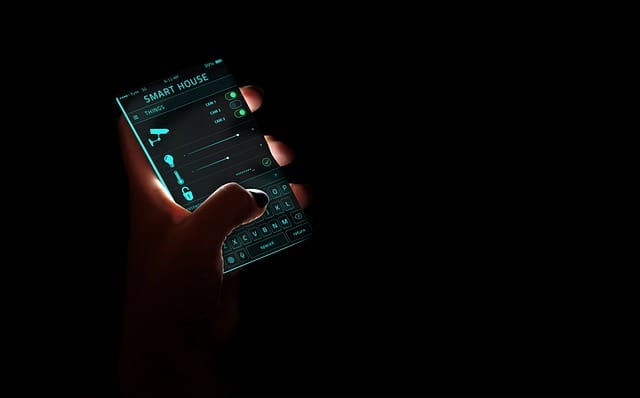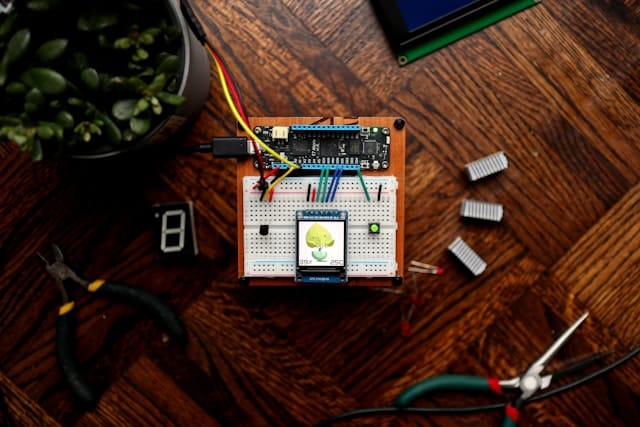The Internet of Things (IoT) has revolutionized the way we interact with the world around us, enabling everyday objects to connect and communicate through the internet. This technology integrates physical devices with software, sensors, and connectivity, allowing for automation, data collection, and smart decision-making. As IoT continues to expand, many individuals and businesses are eager to explore its potential through hands-on projects.
To start your first Internet of things project can be both exciting and daunting, especially if you’re new to the field. However, with the right approach and resources, anyone can embark on this journey. Whether you are a hobbyist, student, or professional, creating an IoT project can enhance your skills and provide valuable insights into how interconnected devices work.
In this guide, we will cover essential steps to help you start your first Internet of things project. From understanding key concepts and choosing the right hardware to developing your project and troubleshooting common issues, this comprehensive resource will prepare you for success. By the end, you’ll have the knowledge and confidence to dive into the world of IoT and bring your innovative ideas to life.
Understanding IoT Basics
Before diving into your project, it’s crucial to grasp the fundamental concepts of IoT. Understanding these principles will help you design and implement your project more effectively.
1. What is IoT?
IoT refers to the network of physical devices connected to the internet, allowing them to collect and exchange data. These devices, equipped with sensors, software, and actuators, can communicate with one another and respond to commands remotely. Examples of IoT devices include smart thermostats, wearable fitness trackers, and connected appliances.
2. Components of an IoT System
An IoT system typically consists of the following components:
Devices/Sensors: Physical devices equipped with sensors that gather data from the environment, such as temperature, humidity, and motion. For instance, a temperature sensor can monitor the ambient temperature and send this data to a central system.
Connectivity: This refers to the communication protocols that enable devices to connect to the internet and each other. Common connectivity options include Wi-Fi, Bluetooth, Zigbee, and cellular networks.
Data Processing: Collected data needs to be processed and analyzed to derive useful insights. This can occur on the device itself (edge computing) or in the cloud, depending on the application.
User Interface: A user interface (UI) allows users to interact with the IoT system. This can be a mobile app, web portal, or dashboard that provides visualizations and control over the devices.
3. Common IoT Protocols
Understanding communication protocols is essential for developing IoT projects. Some commonly used protocols include:
MQTT (Message Queuing Telemetry Transport): A lightweight messaging protocol designed for low-bandwidth, high-latency networks, making it ideal for IoT applications.
HTTP (Hypertext Transfer Protocol): A widely used protocol for transmitting data over the web, suitable for web-based IoT applications.
CoAP (Constrained Application Protocol): Designed for low-power devices, CoAP is similar to HTTP but optimized for constrained networks.
Choosing Your IoT Project Idea
The first step to start your first Internet of things project is to select an idea that interests you and meets your goals. Here are some popular IoT project ideas to consider:
1. Smart Home Automation
Create a system that allows users to control home appliances, lighting, and security through a mobile app or voice commands. For example, you can build a smart thermostat that adjusts the temperature based on user preferences and occupancy.
- Hyperlink Example: Learn more about home automation projects at Adafruit.
2. Wearable Health Monitor
Develop a wearable device that tracks vital signs, such as heart rate and body temperature, and sends data to a smartphone app for analysis. This project can help users monitor their health in real time.
- Hyperlink Example: Check out wearable technology insights at Wearable.
3. Environmental Monitoring
Create a sensor-based system that monitors environmental factors like air quality, temperature, and humidity. This project can provide valuable data for improving indoor or outdoor conditions.
- Hyperlink Example: Explore environmental monitoring solutions at Environmental Protection Agency.
4. Smart Agriculture
Implement IoT devices to monitor soil moisture, crop health, and weather conditions in agriculture. This data can help farmers optimize irrigation and crop management practices.
- Hyperlink Example: Discover smart agriculture innovations at AgFunder.
5. Inventory Management System
Develop an IoT-based inventory management system that tracks items in real-time using RFID tags. This system can help businesses streamline operations and reduce losses.
- Hyperlink Example: Learn more about inventory management solutions at Shopify.
Selecting the Right Hardware
Choosing the appropriate hardware is crucial for the success of your IoT project. Here are some key components to consider:
1. Microcontrollers and Development Boards
Microcontrollers serve as the brain of your IoT devices. Some popular options include:
Arduino: A versatile and beginner-friendly platform for building IoT projects. Check out the Arduino website for project ideas and resources.
Raspberry Pi: A powerful mini-computer that can run a full operating system and handle more complex tasks. Visit the Raspberry Pi website for tutorials and projects.
ESP8266/ESP32: Affordable Wi-Fi-enabled microcontrollers suitable for IoT applications. These boards are widely used in projects that require internet connectivity.
2. Sensors and Actuators
Depending on your project idea, you may need various sensors and actuators. Some common components include:
Temperature and Humidity Sensors: Devices like the DHT11 or DHT22 can measure temperature and humidity levels.
Motion Sensors: Passive infrared (PIR) sensors detect motion and can be used in security applications.
Light Sensors: Photocells or LDRs can measure ambient light levels for smart lighting applications.
Relays: Relays allow you to control high-voltage devices (like lights or motors) using low-voltage signals from your microcontroller.
3. Connectivity Modules
If your project requires internet connectivity, consider the following modules:
Wi-Fi Modules: ESP8266 or ESP32 modules can connect your device to a Wi-Fi network.
Bluetooth Modules: HC-05 or HC-06 Bluetooth modules enable short-range communication with other devices.
LoRa Modules: LoRa (Long Range) technology allows for low-power, long-range communication, making it suitable for remote IoT applications.
Developing Your IoT Project
Once you’ve selected your project idea and gathered the necessary hardware, it’s time to start developing your IoT system. Here are the steps to guide you through the process:
1. Plan Your Project
Outline the project’s objectives, features, and functionalities. Create a schematic diagram to visualize the connections between components. This planning stage is critical for organizing your thoughts and ensuring a smooth development process.
2. Assemble the Hardware
Begin by assembling the hardware components according to your schematic diagram. Use a breadboard for prototyping, allowing you to test different configurations without soldering.
3. Write the Code
Develop the code that will run on your microcontroller. Most IoT projects use languages like C++, Python, or JavaScript. If you’re using Arduino, you’ll primarily write code in the Arduino IDE, which is user-friendly and has numerous libraries available for various sensors and modules.
4. Establish Connectivity
Configure the connectivity options for your IoT device. For Wi-Fi connections, use libraries such as WiFi.h or ESP8266WiFi.h in Arduino. For MQTT communication, use the PubSubClient library to publish and subscribe to topics.
5. Create a User Interface
Design a user interface (UI) that allows users to interact with the IoT system. This can be a mobile app or a web dashboard. For web applications, consider using frameworks like Flask or Node.js to build your UI.
Testing and Troubleshooting
Once you’ve developed your IoT system, thorough testing is essential to ensure everything works as intended. Here are some tips for testing and troubleshooting:
1. Test Components Individually
Before testing the entire system, verify that each individual component functions correctly. This will help identify any faulty parts and simplify troubleshooting.
2. Monitor Data Transmission
Check that data is being transmitted correctly from the sensors to the cloud or user interface. Use tools like MQTT.fx or Postman to monitor message flows and troubleshoot connectivity issues.
3. Debug Code
If you encounter issues, use debugging techniques to isolate problems in your code. Utilize serial debugging in Arduino or logging features in Python to track down errors.
Advanced IoT Techniques
Once you’ve successfully completed your first IoT project, you may want to explore more advanced techniques and concepts:
1. Edge Computing
Implement edge computing to process data closer to the source, reducing latency and improving efficiency. This is particularly useful for applications requiring real-time decision-making.
- Hyperlink Example: Learn about edge computing applications at IBM.
2. Cloud Integration
Integrate your IoT devices with cloud platforms like AWS IoT, Google Cloud IoT, or Microsoft Azure IoT. Cloud services provide storage, analytics, and machine learning capabilities for your IoT data.
- Hyperlink Example: Discover cloud IoT solutions at Google Cloud.
3. Machine Learning for IoT
Apply machine learning algorithms to your IoT data for predictive analytics and intelligent decision-making. This can enhance the capabilities of your IoT applications.
- Hyperlink Example: Explore machine learning in IoT at Microsoft.
Conclusion
Embarking on your first Internet of Things (IoT) project can be an enriching experience, opening doors to innovative applications and solutions. By understanding the fundamentals of IoT, selecting the right project idea, and carefully developing your system, you can create impactful and meaningful projects.
As technology continues to evolve, the potential for IoT applications grows exponentially. From smart home devices to advanced industrial automation, the possibilities are vast. Whether you are a hobbyist, student, or professional, the skills you acquire through IoT projects will be invaluable in today’s tech-driven world.
With continuous learning and experimentation, you can keep pushing the boundaries of what’s possible in the realm of IoT. Embrace the challenges, stay curious, and enjoy the journey of creating your IoT projects!






